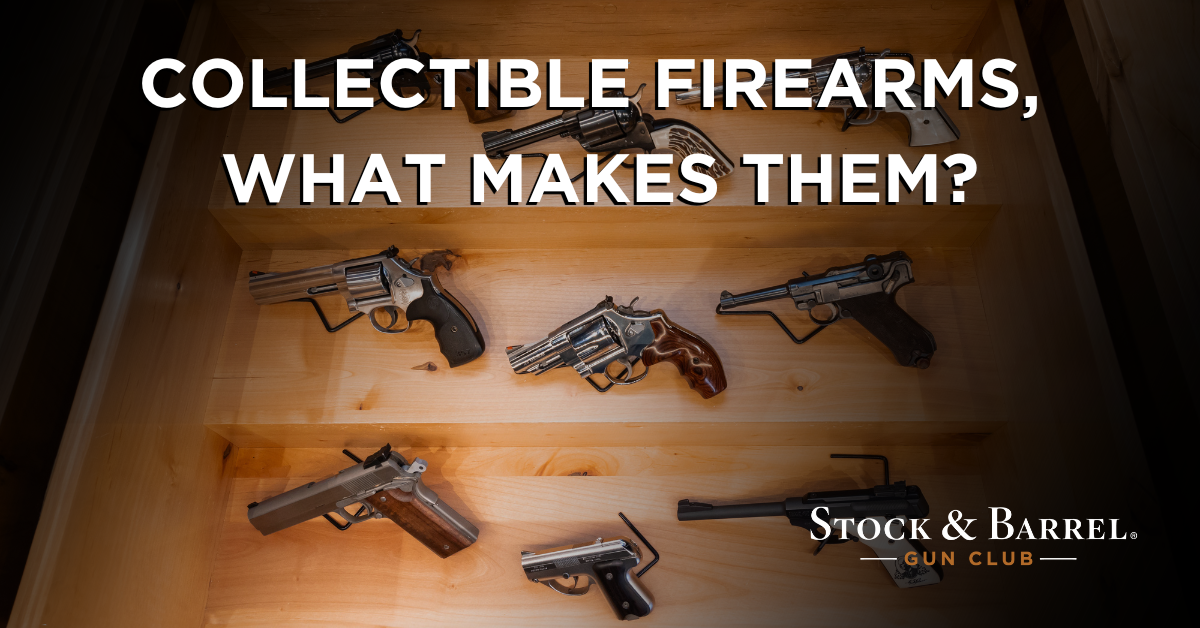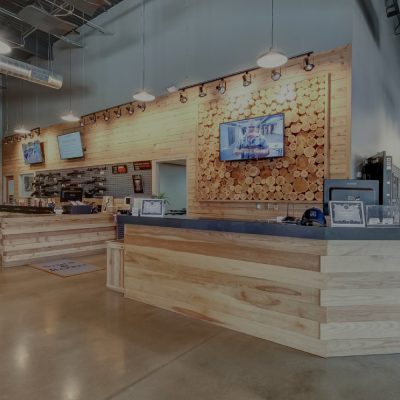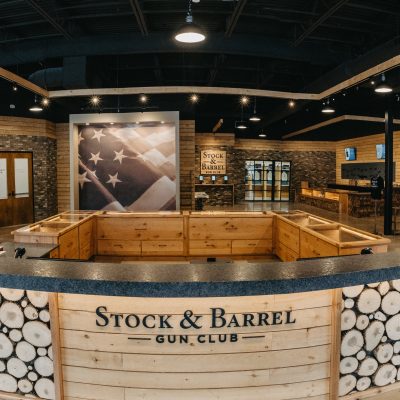Like purchasing a vehicle, purchasing a used firearm can be a complex web of details and data. This is even more so when it comes to the intricacies of buying with the intent of keeping a firearm as a collectible too, hopefully, appreciate in value over time. There are rarely surefire bets on what will become the next big thing, and trends seemingly disappear and reappear like the wind. With that being said, here are a few guidelines that will help steer you in the right direction.
As much as they often get it wrong, Hollywood and its trends absolutely have an effect on the collectible firearm markets. From the days of John Wayne through to the movies of today, like John Wick, there is a consistent appetite for Hollywood firearms in the aftermarket. Often, these firearms depicted in film can carry their value well. The challenge becomes knowing the tastes of current and future buyers. The trick is paying attention to box office numbers and firearms availability.
A good example is a hallmark gun movie like Michael Mann’s epic, Heat. Here, you see a wide range of firearms the characters use, from M16s to Remington 870 12 GA shotguns and Israeli Galils. However, two of the iconic rifles are sought after and simultaneously challenging to attain. The FN FNC appears briefly in Al Pacino’s capable hands but is pivotal to the movie. In the same scene, Val Kilmer wields the rare Colt Model 733. So, while a number of the other guns used in the film can be bought relatively cheaply and easily, those two rifles, due to their significance to the plot as well as import restrictions/limited manufacturing, fetch high prices for collectors.
Major world events that directly involved firearms are a consideration as well. Ironically, to the right buyer, something like a gold-plated AK-47/AKM like what Sadaam Hussein flaunted can be collectible, especially if it comes with any level of legitimate provenance. The old saying, “There’s a buyer for everything,” holds. Recently, however, there’s been a surprising surge in the desire for odd firearms used in conflicts worldwide during the 70s and 80s. An excellent example is the Rhodesian War in South Africa from roughly 1964 to 1979. Again, a broad range of firearms were present in this conflict. Collectors have been snapping up pieces used during this war with the documentation to prove it in all calibers and types. Particular interest goes to the FN FALs used in the conflict, particularly those with a brushstroke-esque paint job and field modifications made by the individual soldiers.
The real rabbit hole in this category is the AK-47/AKM platforms, and their multitude of variants produced worldwide. Specific models of these vaunted rifles from Egypt to China and beyond can fetch eye-watering prices for seemingly innocuous, antiquated examples. Like art and wine, however, the history and documentation accompanying them truly make them collectible. Due to current import restrictions, proper examples of this platform have become drastically more difficult to attain, but they’re still out there if you look closely enough and have the resources to back it.
Next up are firearms associated with specific events or figures in history. The .44 caliber Smith & Wesson revolver that killed Jesse James was sold at auction for a staggering $350,000 to an anonymous buyer in 2003. Once again, the historical pedigree of this infamous weapon is beyond reproach, making it a truly unique piece. Sit down for this next one. George Washington’s saddle pistol set fetched a hefty $1,986,000 in 2002. These firearms are in a whole different stratosphere regarding collectibility, and to this day, rare and unique firearms of this caliber (pun intended) still crop up occasionally. Much like rare wines or cars, you’ll want to make sure to consult with a firearms historian if you believe you’ve come across a piece of this type. Stay far away from a pawn shop!
Lastly, we have period-accurate pieces that are not of that time but have been built to the exacting specifications of the era. The Global War on Terror, specifically in Afghanistan and Iraq, birthed a wide range of standard-issue and specialty firearms fielded by several nations, including the United States. For those who were issued firearms of these types or those who desire to own a piece of history without the exorbitant price tag, what we refer to as clone builds are a highly collectible option. While potentially falling behind modern offerings in terms of capability, these firearms are still suited to the tasks for which they were designed and can be used effectively, making them stand apart from other collectible categories. What makes these difficult to collect is the precise details required to be considered “clone correct.” Often, due to supply constraints and government bureaucracy, many parts for particular builds were made in short supply and have been out of production for decades. Thanks to the Internet, the exacting nature of these builds has also been outlined in minute detail, meaning you could have everything nearly perfect. Still, one small piece could mean the difference of thousands of dollars to a collector.
One of the best things you can do regarding collecting firearms is to rely on expert advice and insight into the validity of your firearm. Before consulting an expert you’ll want to make doubly sure the firearm is safely unloaded. The friendly Stock & Barrel Vault staff will gladly assist you with a firearms appraisal. Whether you’re looking to trade in a firearm towards something else, see if the Vault is willing to purchase your firearm, or you’re interested in a consignment offer, you’re in good hands with the knowledgeable staff.
Collecting firearms can be lucrative, fun, and a journey through history, all together or individually. The only question is, what would you like to have on your mantle?!
OTHER BLOGS YOU WILL FIND OF INTEREST:
- Collectible or used firearms, the which and why?
- Significant women in firearms history
- Firearms Maintenance
CLASSES YOU MAY BE INTERESTED IN:
- Cowboy Action Shooting in Chanhassen
- Introduction to Handgun Safety in Chanhassen or Eagan
- Travel Safety & Security in Chanhassen or Eagan





